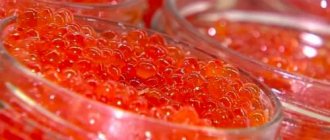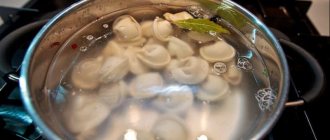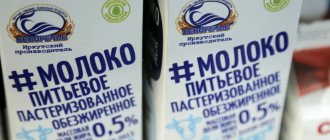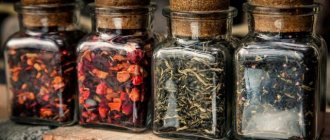You don’t need to be a major specialist or connoisseur to understand that after opening the package, beer begins to rapidly lose its quality. To enjoy your favorite drink longer, you should know the rules for storing it in plastic bottles. Otherwise, consuming a spoiled product may negatively affect your health.
How long does “live” beer last?
Despite the obvious economic benefits of using plastic bottles, this material is not able to provide all conditions for safety. It is for this reason that experts recommend drinking beer on the day of purchase. In cases where it is impossible to follow this recommendation, you must adhere to certain rules:
- The average shelf life of an intoxicating drink cannot exceed 3 days. This is explained by the fact that during a spill the mixture comes into contact with air, which leads to a change in its qualitative and quantitative characteristics.
- It will not be possible to achieve complete sealing even with severe clogging. This suggests that, albeit gradually, the drink will lose all its valuable qualities.
- For storage, it is best to choose a bottle made of dark plastic, as it can provide more reliable protection from sunlight.
Processing methods such as filtration and pasteurization can extend the shelf life of the drink. In this case, manufacturers can indicate on the packaging a shelf life of up to 6 months. Even if these conditions are met, it is best to drink beer within 2-4 weeks. If the beer was not purchased in its original packaging, then it is best to store such a draft product for no more than 2 days.
Where is the best place to store
Light and dark draft beer spoils in the light. In addition to darkness, you need a suitable temperature. At home, a refrigerator is suitable, but not a freezer. Containers are placed on shelves. Industrial refrigerators are used in factories. In traditional factories they are kept in special storage facilities.
Alternative places:
- basement . No light, just the right temperature. It is convenient to store large quantities of draft alcohol, as well as Martinis and other drinks. There is no room for it in the refrigerator during the holidays;
- cellar _ The temperature in the pit is lower, the draft alcohol will remain fresh longer. You can quickly lower or raise it in a bucket with a rope attached;
- well . The old way. In villages, beer and kvass were cooled in wells. The containers are placed in a net, tied, and lowered with a rope. It is important to tie the loose end tightly;
- of water An alternative to cooler bags is a storage option for outdoor recreation. Seal the sealed containers tightly and place them in the water near the shore in a shady place.
If you are going to take beer on a trip or outdoors, use a cooler bag. Large temperature changes negatively affect the taste of the drink. Using a travel refrigerator will allow you to drink your drink cold no matter where you are. In an online store, you can choose an inexpensive model, unlike offline stores, where prices are much higher.
Do not keep filled containers on shelves in the refrigerator door. The temperature here is the most unstable. It rises quickly when opening, but falls for a long time.
Why you shouldn't drink beer that has already expired
In principle, drinking beer that has expired is not prohibited. It is not capable of causing serious harm to health. However, it is unlikely that anyone will be satisfied with the repulsive aroma and taste of an expired intoxicating drink, which may contain harmful microorganisms or some kind of infection.
As you know, the composition contains alcohol and hops, which are excellent preservatives. They can kill almost any infection. Therefore, if the taste of the drink is not repulsive, then a person can continue to drink it.
In addition, if we remember the rule, according to which a high alcohol content helps the drink become better over time, then beer, despite the expiration of its time, should also improve its quality. An example of such an intoxicating drink is unfiltered beer of high strength. Therefore, deciding whether or not to drink expired beer can only be done on an individual basis.
Depending on production
Factory
Drinks produced on an industrial scale (the popular Heiniken, Holsten, Bad, Amstel, Krusovica) usually have a fairly long shelf life, which varies depending on the properties of the variety and manufacturer in the range from 3 to 12 months.
Craft
Nowadays, craft beer is beer produced by microbreweries according to their individual non-industrial recipes for sale to consumers. In a closed container, the maximum shelf life is 6 months, ideally if you drink the product within 7 days.
Draft and live
The live group (in which yeast is preserved) includes:
- homemade - retains its nutritional value for 3 months.
- filtered, unpasteurized - should be consumed within 8-10 days (“Abakanskoe”, “Ayan”, “Karachaevskoe”, “Maikopskoe”, “Khadyzhenskoe”).
- unfiltered, unclarified, unpasteurized – natural, has the shortest shelf life (72 hours).
How to properly store draft beer in a plastic bottle
In order for an intoxicating drink to bring exceptional pleasure, in addition to the timing, you also need to know about the rules for storing it. To ensure safety, the following conditions must be met:
- Properly store the drink, for which it is recommended to ensure the vertical position of the bottles. This prevents the yeast contained in the drink from settling to the bottom. In addition, there is an opinion according to which beer loses its taste when in contact with a plastic lid.
- It is best to store live beer in a dark place in order to protect it from direct sunlight.
- It is important to understand that live beer does not last long in plastic containers. But in this case, it is better to give preference to dark plastic bottles.
- The storage temperature of the hop composition is no less important. It all depends on the type of drink. It is preferable to store light varieties in the refrigerator at a temperature no higher than +8 degrees. Strong varieties will be better left at room temperature. You should not store beer in the freezer, as this can lead to loss of taste.
You might be interested in: What are you drinking: is “nulevka” actually beer?
Optimal temperature and humidity
Temperature and humidity indicators significantly affect how long beer will be stored. And if, regardless of the variety, it is recommended to maintain humidity at 85%, then the optimal temperature will depend on the strength of the drink. The stronger the beer, the higher the temperature it can withstand without changing its taste:
- strong varieties – from +12 to +15⁰С;
- varieties with average alcohol content – from +10 to +12⁰С;
- low-alcohol varieties – from +7 to +10⁰С.
Live unpasteurized beer retains its properties at +20… +25⁰С.
What can you do to extend the shelf life of draft beer?
Shelf life depends on a number of factors, including:
- compliance with sterility rules during the cooking process;
- using suitable bottles and caps;
- variety;
- storage conditions.
Brewers who have extensive experience in this matter are of the opinion that compliance with sterile conditions helps to extend shelf life and preserve taste. At the same time, the drink continues to mature, there is a gradual displacement of cultures that promote oxidation, and the increasing strength contributes to preservation.
If you adhere to the rules of sterility and cleanliness during the brewing process, you can increase the aging period of beer to 90 days. At the same time, the quality will be significantly higher than that of those varieties that are widely sold.
How to tell if your beer has gone bad
The main sign of spoilage is a sour taste. The fresh product is sweetish with notes of malt, bread, and has a characteristic aroma. If stored incorrectly and after the expiration date, beer becomes similar to kvass mixed with mash or sour compote. Sometimes bitterness and an alcoholic aftertaste are added to the acid.
Other signs of damage:
- no foam. Ideally, when bottling fresh beer, a “cap” of 3-6 cm is formed. The foam is dense, white, does not scatter in the wind, you can blow it. Lasts from one to three minutes. It should not fall off quickly, like lemonade;
- remains on the walls. After a sip, foam should remain on the walls of the glass mug. Clean dishes are a sign of spoilage;
- the appearance of a protein sediment, cloudiness at the bottom of the dish. It appears 7-10 days after opening the keg or barrel. Sometimes earlier, depending on storage conditions.
If you bought sour beer on tap, we recommend returning it to the store. Beer that has lost its quality during home storage can be used in yeast dough for pancakes and pancakes. Suitable for marinating meat and preparing shanks according to German recipes.
Shelf life and storage period
From a legal point of view, the expiration date (SG) is the time period during which the product remains safe for consumption: beer with a valid expiration date can be drunk without fear for health.
Shelf life is another category. During the shelf life, the product is guaranteed to retain its organoleptic and other quality characteristics if storage conditions are met.
Thus, the shelf life is more related to the quality category, rather than the safety of the product: during the storage period, beer remains of high quality, but after this time, changes may appear in the structure, taste and aroma of the product. You can drink such an intoxicating drink, but most likely the sensations will be different and the beer will seem less tasty.
What period does the manufacturer set?
According to Decree of the Government of the Russian Federation No. 720 of June 16, 1997, beer (like other products of the beer and soft drinks industry) is included in the list of food products that become unsuitable for consumption after their expiration date.
For this category of goods, the manufacturer is obliged to set an expiration date and also determine storage conditions. SG is installed in accordance with regulatory documents aimed at protecting consumer rights, as well as in accordance with the requirements of GOSTs and TUs.
Important! In accordance with GOST 31711-2012, the manufacturer determines the SG for beer, taking into account the specifics of the raw materials, technological features of production and bottling conditions. Data on SG are entered into the technological instructions.
According to clause 5.2.2. GOST 31711-2012, the manufacturer has the right to influence the duration of SG through the use of “auxiliary means” (special additives).
Reference point, including for draft
The shelf life of food starts from the day (time) of production or the end of the technological process, so you should not focus on the day when the seller dispensed the foamy drink in his container or the bottle of beer was purchased in the low-alcohol products department. The production process was completed much earlier, but exactly when is indicated on the label.
If beer is sold on tap, a representative of the retail outlet where the product is purchased must inform about this.
Marking
According to clause 5.4. GOST 31711-2012, the consumer packaging must indicate the following data related to storage:
- the date of bottling;
- best before date.
Since the suitability of the product for the period guaranteed by the manufacturer depends on how the food is stored, storage conditions must be listed on individual containers.
The marking must be readable and clear, so durable (non-erasable) materials are used to apply the information.
The SG data format can be as follows:
- “Use by... (date).”
- “Best before... (date).”
- “Good for... (hours/days/months).”
The marking is applied to the label in the form of a stamp on the reverse side or notches opposite significant calendar marks (dd/mm/yy).
In glass
A good option for preserving the gastronomic qualities of the product is if draft beer is stored in a glass container. Its advantages are as follows:
- It is easy to reuse later.
- Eco-friendly and no harm to nature.
- Aesthetics.
- Withstands high pressure from gases.
- For alcohol with long aging, glass containers with a yoke or crown stopper are much better suited. They are sealed and do not allow air and carbon dioxide to pass through.
How long can draft beer be stored in a glass bottle if it has not been opened? A live draft drink in a hermetically sealed glass bottle will preserve freshness, taste and benefits for the body for 8 days. Once opened, the shelf life is reduced significantly. Craft beer can be stored in glass for 5 days.
When choosing a bottle for storing a carbonated alcoholic drink, give preference to containers made of dark types of glass.
Sometimes there is not enough space in a home refrigerator, which makes storage space difficult. Is it possible to store beer at home outside of the refrigerator? Yes, you can, but there must be a suitable ambient temperature so that it does not deteriorate ahead of time. Often, basements, cellars, balconies and loggias are used as an alternative to a refrigerator.
How to determine freshness when purchasing?
Commodity experts evaluate the drink according to organoleptic indicators, indicating high or low quality. Each variety and type of beer will have its own special characteristics and characteristics. But there are some general indicators of quality:
- transparency: high-quality varieties (except dark ones) have high transparency;
- foaming ability: a dense high “cap” with small bubbles appearing occasionally is formed on the surface of the fresh product;
- foam resistance: it is important that the foam not only forms during a spill, but also maintains its density and height for a certain period;
- fullness, expressiveness and harmony of taste (inherent in the variety);
- characteristic aroma;
- the presence of a slight pleasant hop bitterness.
The following are considered defects:
- low fermentation: marked by a sweet and bready taste;
- signs of souring: sharp sour taste;
- signs of improper fermentation: a basement taste is formed when fermenting in dirty vats;
- taste defects: weak, unexpressed, inharmonious, empty, sweet, malty;
- uncharacteristic taste: metallic, phenolic, oily, sulfurous;
- atypical bitterness: rough, weak, lingering;
- the aroma of spoiled beer.
Recognizing delay
To identify expired malt alcohol in catering establishments or at points of sale, you need to know the main signs of a spoiled drink and follow the following recommendations:
- Evaluate the appearance: the presence of sediment like flakes, turbidity, lack of foam, its yellow color, or, conversely, too much foam indicates spoilage of alcohol.
- Pay attention to the smell: a pronounced, sharp musty smell with notes of burnt rubber and hydrogen sulfide indicates a spoiled product.
- Taste it: the taste of vinegar or sour milk means irreversible chemical reactions have begun.
- The presence of crooked labels on the bottles and poor-quality printing of texts indicates a possible counterfeit product.
- When purchasing canned goods in a supermarket, pay attention to the maintenance conditions. Their violation at various stages of production, sales and transportation leads to a decrease in shelf life.
- Avoid purchasing products in deformed containers or with signs of packaging leakage (loose lid).
How to choose a fresh drink
Draft beer is brewed at the brewery. Next, it is poured into kegs - steel, hermetically sealed barrels. After opening, this time is reduced to a week. You can determine the freshness of draft beer by the following criteria:
- foam – persistent, thick, high, lasts up to 3 minutes;
- remains on the walls of the glass;
- does not disappear if you blow on it;
- there is no light sediment or suspension;
- keg opened no more than 5-7 days ago.
It is better to purchase the drink from reliable suppliers, since not everyone will honestly answer the question about the date the keg was opened.
Another option is that after cooking, the product is immediately poured into glass or plastic containers. In this case, the drink and packaging must be carefully inspected before purchasing:
- A small dark sediment is allowed, light sediment indicates unsuitability for consumption;
- good shelf life;
- container without damage;
- There should be no foam protruding from under the lid.











